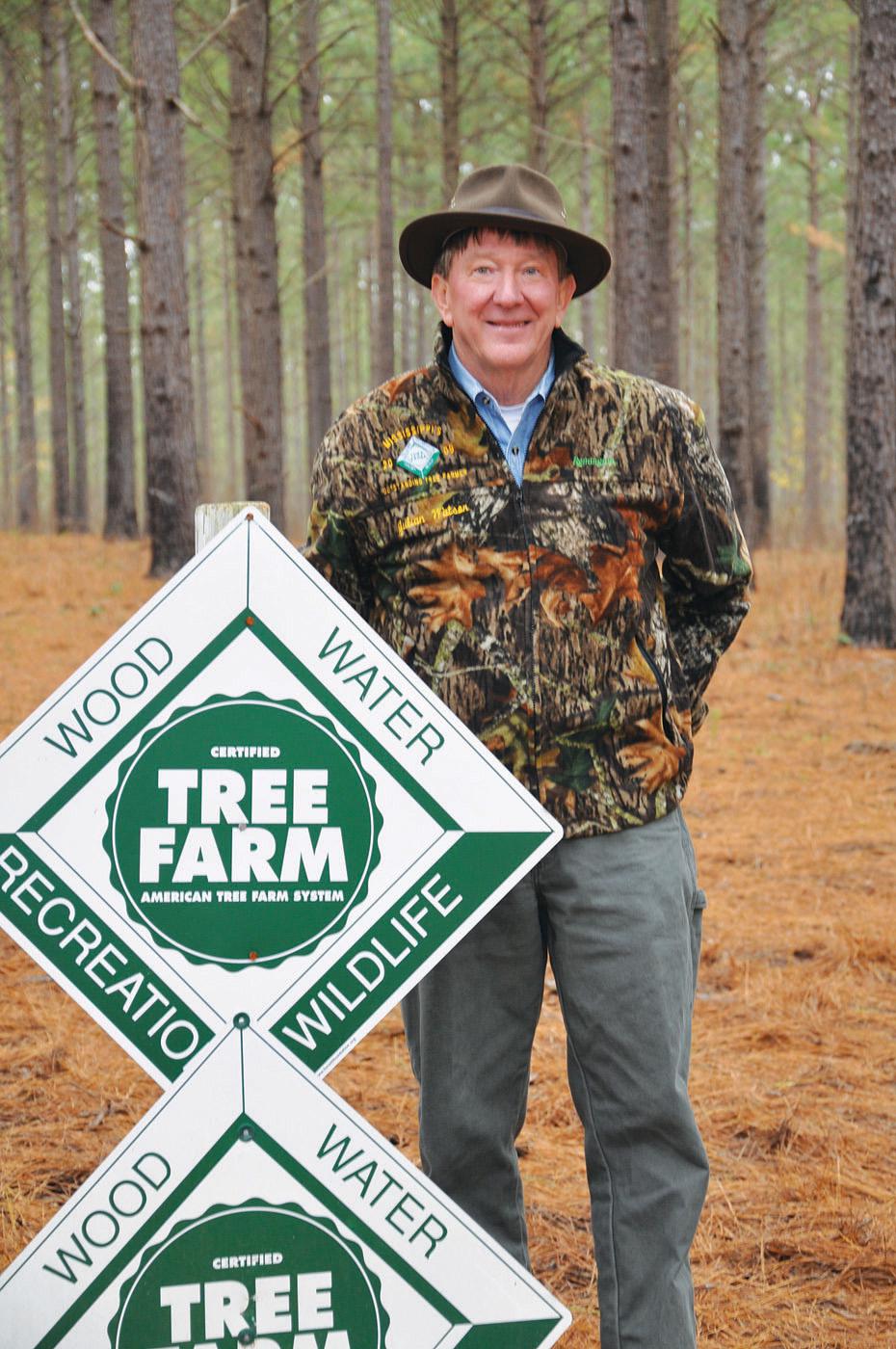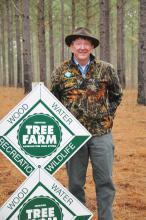Information Possibly Outdated
The information presented on this page was originally released on July 15, 2010. It may not be outdated, but please search our site for more current information. If you plan to quote or reference this information in a publication, please check with the Extension specialist or author before proceeding.
Mississippi tree farmer benefits from Extension
MISSISSIPPI STATE – When Julian Watson decided to turn his erodible farmland into a tree farm, he had no idea that 24 years later he would be so widely recognized for his efforts.
Watson’s grandparents purchased the land in 1872. When Watson inherited it, he focused on trying to prevent erosion. The 1,100-acre parcel was washing away at a rate of 30 to 50 tons of topsoil per year.
Watson turned to the Soil Conservation Service, now the Natural Resources Conservation Service, for a soil analysis to determine the best use of his inheritance. The agency suggested he plant pine trees on the land. Watson took that advice, not knowing he would eventually be named the 2009 Mississippi Forestry Association’s Outstanding Tree Farmer of the Year. While Watson appreciates the honor, he says it’s just the icing on the cake.
“My intent through the years has been to make money from my family land while holding onto topsoil and taking care of wildlife,” Watson said.
He has been successful on all counts.
The park-like forest, which belongs to Watson and his mother, Juanita Powers Watson, was last farmed in 1985, when the soybeans could not be harvested because of erosion.
“My family thought I was crazy when I began planting pines,” Watson said. “But I can tell you now that it was one of the best decisions I ever made.”
Watson was the first in Mississippi to sign up for the Conservation Reserve Program, a program administered by the NRCS to convert highly erodible land into productive vegetative cover. Under a multiyear contract, the program provides an annual rental payment and cost-sharing assistance for some forestry practices.
Watson was instantly hooked after planting his first pine seedling. Tree farming not only captured his interest, it became a lifelong passion.
“When I started, I knew absolutely nothing, but at least I knew I didn’t know anything,” Watson said. “I went to every field day and short course I could to learn as much as possible about land management.”
Watson first met Mississippi State University Extension forestry professor Tim Traugott at a field day in the late 1980s.
“I believe Julian attended every short course and field day offered through MSU Extension forestry, many of them more than once,” Traugott said.
Traugott, who retired in 2008, said that Watson’s love for tree farming energizes everyone around him.
“There are thousands of people who own tree farms, but Julian is a true tree farmer: he treats his forest as a crop,” Traugott said. “He can tell you when everything was planted, when it was sprayed and when it was harvested, and he loves to tell others about his success.”
“Julian is exactly what a tree farmer of the year should be,” said Extension forestry specialist Britton Hatcher. “He implements his forest plan, maintains his forest, educates others, forms county-level forestry associations and is very active in the forestry community.”
While Watson manages his family land primarily for income, he also manages to take care of wildlife and protect the soil from erosion.
“It wasn’t hard to care for the wildlife, since anything you do for the trees also benefits deer, turkey or other wildlife living there,” Watson said.
Watson makes a profit by thinning his trees. He also leases his land for hunting. Recently, he sold carbon credits. Although his knowledge about forestry has increased, he still relies on consulting foresters and a forest management plan.
“Julian implements his forest plan on the land,” Traugott said. “He actually puts it to use on his tree farm, so he will benefit from it. He thins his tree farm at the proper times, and uses prescribed fire and herbicides to remove unwanted species.”
Hatcher and Traugott have installed a 1/10-acre demonstration plot on the property. Last year, the Extension duo measured the growth of trees on the plot to determine the best time for thinning. Watson is teaching others about forest management in the demonstration area.
“Until recently, I had the only growth study plot in north Mississippi,” Watson said. “I believe that if you are serious about tree farming, it just makes sense to keep up with what your trees are doing.”
And Watson knows exactly what his trees are doing. He will soon cut and replant his tree farm. Watson’s tree farm is certified through the American Tree Farm System, a program of the American Forest Foundation’s Center for Family Forests.
A tree farm is a wonderful legacy to pass on to the next generation, Watson said.
“To take nonproductive land and put new life into is fulfilling. Of course, a 30-year investment is not for the fainthearted,” Watson said. “You have to put a lot of time, effort and funds into a productive tree farm, but it is a good long-term investment.”






